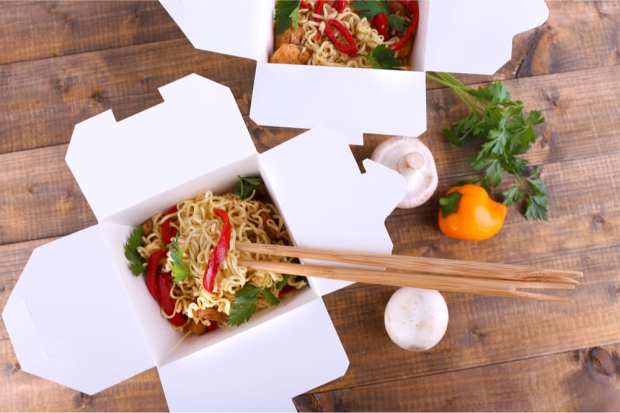For One Restaurant, Life Before (And During) COVID-19

There are seismic events that are so mammoth in scale they become shorthand for a shift in the way we live, in the way we interact with one another.
COVID-19 will surely go down among those events.
And in the broad tapestry of a global pandemic lie a million individual stories, detailing the human and economic toll.
That’s especially true in the restaurant sector, where untold numbers of eateries have gone dark completely, or have shifted operations away from dine-in offerings to some creative options and alternatives to keep things afloat during the coronavirus pandemic.
In an interview with Karen Webster, Lisa Kuscu, co-owner (and emergency room nurse) with her husband Mustafa of Providence, Rhode Island restaurant Noodles 102, detailed life before and during COVID-19.
As of March 19, the restaurant has been open for takeout only, and during significantly reduced hours.
Go back what seems a lifetime ago, to mid-February, when the first U.S. cases were gaining notice in the media but COVID-19 still seemed largely a scourge for Asia and Europe. As Kuscu noted, even back then there were beginning to be signs of concern, as foot traffic started to decline.
Fast forward to the week before the week the government ordered dine-in activities to cease, and traffic was down by 50 percent.
For a restaurant that typically does 85 percent of its business through dine-in activity spanning 40 seats, the impact has been severe.
Kuscu noted, “We have people from neighboring towns who drive to us. So we don’t just have foot traffic [from the neighborhood]. We have a lot of professors and students from Brown University, locals, businesspeople, and everyone in between.”
The movement to takeout-only offerings has helped restore a bit of top line, but only about 50 percent of previous levels. And as Kuscu told Webster, “Nobody can really prepare for all this, the magnitude of it.”
Embracing Curbside Delivery
As part of the switch to takeout, Kuscu said Noodles 102 increased curbside pickups — leveraging Square readers — so that people do not have to come into the restaurant and can practice social distancing.
Asked by Webster whether the firm would embrace traditional delivery — direct to consumers’ homes — Kuscu said, “it’s certainly in the realm of possibility right now. We will do whatever we can do to make it easier for our customers to keep supporting us.”
Though Noodles 102 might consider using an aggregator, doing delivery directly would be a way to keep staff engaged and, of course, paid.
“We’re definitely concerned about our employees,” said Kuscu. “Some of them have been here 10 years with us and they’re really like family. They have rent to pay.”
She said the pivot toward takeout has gotten a boost from local clientele and supporters through Facebook, and grass-roots word of mouth.
Asked about the government reaction, and whether any financial lifelines or aid have been in the offing, Kuscu said government agencies had yet to reach out and that they have “some obligation” to aid small businesses trying to weather the storm. Cutting payroll taxes would be helpful, she said, and would help keep costs down enough to keep employees on board.
Other options to keep the top line coming in might include offering meal kits, Kuscu said.
Looking ahead, as to a timeframe as to how long all this might last, Kuscu said, “I hope it’s not long. I’m not sure how long any small business can survive this and, and I think it’s just going to completely destroy the economy. We do need to get back open as soon as we can, but there’s a balance that needs to be looked at here.”
With a nod toward her training as a healthcare professional, she said, “We have to save lives, stem the tide and flatten the [COVID-19] curve and I’m all for that as a nurse.”
Rhode Island is a state that, according to Kuscu, has half of its small businesses tied to the restaurant industry, so as these small eateries go, so goes the local economy.
“My advice is just hang in there,” she told Webster. “We can’t let this economy fall — and there is a light at the end of the tunnel.”
